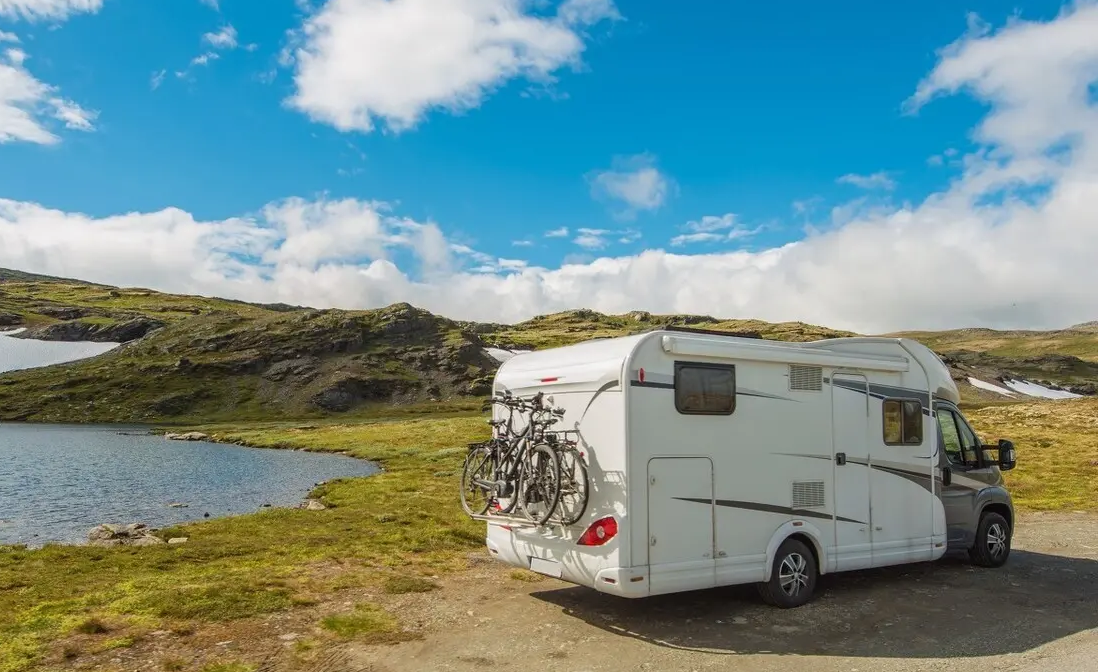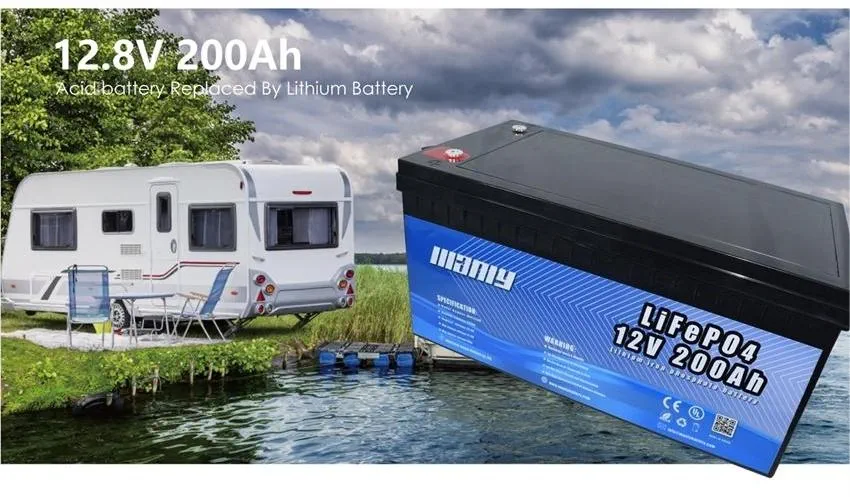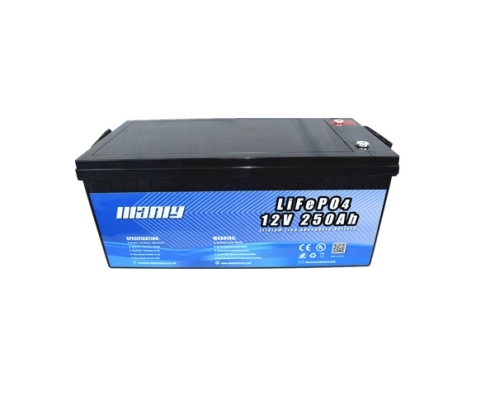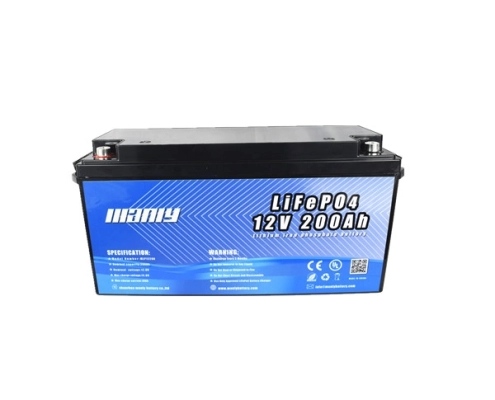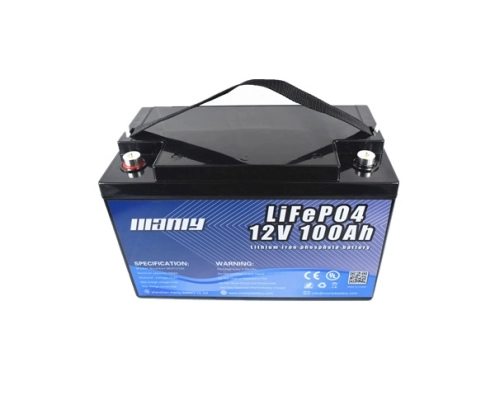RV Batteries: Everything You Need To Know
Table of Contents
The spirit of adventure and wanderlust is interwoven into the very fabric of the RV experience. As you go on your journey, navigating scenic byways and setting up camp under a canopy of stars, the last thing you want is to be tethered down by power issues. Welcome to the definitive guide to RV batteries, the lifeblood of the modern RV experience.
If you’re part of the ever-growing community of RV owners or are involved in the supply chain, ensuring a dependable and sustained power source becomes pivotal. In this guide, we don’t just scratch the surface. So, let’s begin this electrifying journey!
1. The Anatomy of an RV Battery
So, what qualifies a battery to be tagged as an “RV battery”? In essence, an RV battery is the heart that pumps electrical life throughout your RV’s veins. But don’t be mistaken, it’s not a one-size-fits-all deal. Most drivable RVs play host to two major types of batteries:
Starting Batteries (Chassis Batteries): Think of these as the ignition spark to your RV’s engine. But that’s not all; once your RV roars to life, these batteries take on the role of powerhouses, lighting up the interiors and powering up other onboard electrical systems. Their counterparts from the world of regular automobiles might resemble them, but RV starting batteries are built tougher and are designed to release a sustained flow of power over extended durations.
House Batteries (Deep-Cycle Batteries): Once you’re parked and your RV becomes your temporary home, these are the batteries that keep the home fires burning. Everything from your microwave, refrigerator to the ambient lights – it all draws power from these. When not tethered to shore power, these batteries are the primary source of electricity. Their design enables them to be connected in parallel, thereby enhancing capacity.
2. Different Types of RV Batteries
When it comes to house batteries, there are primarily three contenders in the market:
2.1 Flooded Lead-Acid (FLA):
The old faithful of the battery world. Their widespread availability and cost-effectiveness make them an attractive choice for those working within a budget. The catch? They demand regular check-ups. From monitoring water levels to the potential hazards of acid spills or leaks, there’s a bit of maintenance involved. They’re also not the most efficient of the bunch, especially when juxtaposed against AGM or lithium batteries.
2.2 Absorbed Glass Mat (AGM):
A close relative of the FLA, given both are variants of lead-acid batteries. But AGMs come with a significant upgrade. These are sealed units, eliminating the need for routine maintenance. Additionally, they possess a heightened resilience against factors like vibration, excessive heat, and overcharging. Their energy density is also commendable, allowing them to store a more significant amount of energy in a confined space. Yes, they are pricier than FLAs, but they compensate for this with a more extended service life.
2.3 Lithium RV battery:
RV lovers are going wild for lithium RV batteries. Why? Well, if you’re camping off the grid and have solar panels on your RV, lithium batteries are your best bet for storing all that sunshine power.
Why Lithium is the Way to Go:
- Discharge Rate: Compared to the old-school lead-acid batteries, lithium ones hold their charge longer. They can use up to 80% of their stored energy. The old ones? Only about half.
- Charge Speed: Lithium batteries charge fast. They can handle a lot of power going in and out without getting hurt. Lead-acid batteries can’t handle that kind of action. Charging them too fast can even be risky.
- Lightweight: These lithium batteries are light. Like, really light. Think about a third of the weight of an equal-sized lead-acid battery. So, if you’re trying to watch your RV’s weight, lithium’s the way to go.
- Lifespan: These batteries just last longer. A lead-acid battery might last around 400 charge cycles. A lithium one? Over 2,000. That’s a lot of trips without needing a new battery.
- Low Maintenance: No more checking on your battery all the time. No rust, no leaks. Just charge and go.
- Safety: You can put lithium RV batteries anywhere in your RV. Under your bed, in a cabinet, you name it. They don’t let off dangerous fumes like lead-acid batteries. So, you’re safe and sound.
- Space Savers: Not only are they lighter, but lithium batteries are also smaller. That means more space in your RV for other stuff.
- Steady Power: When lithium batteries give power, it’s steady and consistent. Lead-acid ones? Not so much. So, with lithium, everything runs smoother.
To sum it up, lithium RV batteries are a game-changer. They’re safer, last longer, and give you peace of mind. With five times the lifespan of lead-acid batteries, they save you time and money.
2.4 LiFePO4 battery:
The lithium iron phosphate battery (LiFePO4 battery) or LFP battery (lithium ferrophosphate) is a type of lithium-ion battery using lithium iron phosphate (LiFePO4) as the cathode material, and a graphitic carbon electrode with a metallic backing as the anode. Because of their lower cost, high safety, low toxicity, long cycle life and other factors, LFP batteries are finding a number of roles in vehicle use, utility-scale stationary applications, and backup power. LFP batteries are cobalt-free.
3. How to Maintain RV Batteries
Maintaining your RV batteries is akin to taking care of your heart – with diligent attention and routine checks, it ensures a smoother journey through the landscapes of your adventures. Here’s a deep dive into the world of RV battery maintenance, covering the gamut from general care to the specifics for each battery type.
3.1 General Maintenance
Battery maintenance is a combination of vigilance and periodic intervention. It’s not rocket science, but a matter of regular checks and timely interventions.
Flooded Lead-Acid (FLA) Batteries:
Of the triumvirate (FLA, AGM, and LiFePO4, FLA)batteries demand the most maintenance. It’s essential to inspect the electrolyte level periodically and top it up with distilled water when needed. Also, ensure that the terminals remain pristine and free of corrosion. Using a mixture of baking soda and water can be an effective cleaning solution for corroded terminals.
Absorbed Glass Mat (AGM) Batteries:
Although they are maintenance-free, periodic visual inspections will not hurt. Keeping the terminals clean and free of any corrosion is essential, ensuring uninterrupted power flow.
Lithium Batteries:
Fully charging your lithium RV batteries will extend their lifespan.
If you’re not using your lithium RV batteries for more than three months, they should be fully charged. Keep them topped up and avoid letting them sit for over three months. Ideally, every three months, drain at least 50% of the battery. If possible, use even more and then recharge it fully.
During summer, don’t let your batteries sit under direct sunlight for extended periods. Constant high temperatures can cause chemical changes in the battery.
Make sure metal objects don’t get inside the battery storage area. They can cause the batteries to leak, overheat, produce smoke, catch fire, or even explode. Keep the battery compartment clean and free from metal debris.
When using lithium RV batteries, take care. Overcharging, constant deep discharges, or bad charging habits can shorten their life. So, when using appliances in your RV, avoid fully draining your lithium RV batteries.
3.2 Proper Charging and Discharging Practices
Your RV battery’s performance is closely tied to how you charge and discharge it.
Charging Insights
- Always employ a battery charger that is compatible with your specific battery type (FLA, AGM, LiFePO4).
- Adhere to the recommended voltage levels specified by the manufacturer.
- Overcharging is a battery’s nemesis. It accelerates wear and tear, thereby shortening the battery’s lifespan.
- A 3-stage charger is beneficial as it charges the battery in bulk, absorption, and float stages, ensuring optimal charging.
Discharge Guidelines
- Never drain a battery completely. Ideally, lead-acid batteries should never dip below a 50% charge, while lithium batteries can be stretched to an 95% discharge.
- A quality battery monitor can be your best friend. It tracks the state of charge and ensures you never cross the lower threshold.
- Batteries don’t appreciate being left discharged for prolonged periods; it adversely affects their health.
3.3 Caring for Your RV Fleet
If you are a fleet owner, your responsibilities multiply. Here’s how you can provide your customers with a seamless experience:
Routine Maintenance: Don’t wait for a problem to surface. Schedule routine maintenance checks for all your RV batteries to ensure they’re in tip-top shape.
Proper Storage: If your RVs aren’t in active use, make sure the batteries are stored correctly, preferably in a cool, dry place.
Replacement Protocol: Batteries have a finite life. Having a replacement protocol ensures you’re never caught off-guard.
Customer Education: Knowledge is power. Educate your clientele about the nuances of battery usage, charging, and general care.
4. Is Your RV Battery Going Down?
Unfortunately, batteries aren’t immortal. Recognizing the warning signs can save you a lot of grief. Here’s what you need to be wary of:
For Lead-Acid Batteries
- A battery that loses its charge rapidly or demands frequent recharges.
- Any physical anomalies like swelling or leakage.
- Dimming lights in the RV or an engine that’s reluctant to start.
For Lithium Batteries:
Some of the advanced models come equipped with battery management systems. These systems are designed to flash error messages or indicators when the battery is in its twilight phase.
5. How Long Do RV Batteries Last
5.1 Lithium RV Batteries: How to Calculate Your Power Needs
RVs have a bunch of things that use power. The main consumer of electricity on the RV is microwave, and AC. Then you have smaller stuff like rice cookers, electric frying pans, kettles, and computers.
Breaking it down:
- The fridge uses about 40 watts. Daily = around 0.5 kWh.
- Microwaves are power-hungry. They use between 700-800 watts. But if you’re just warming up food for 10 minutes a day, you’re looking at about 0.2 kWh.
For cooking:
- Rice cooker = 600 watts. Making one pot of rice eats up about 0.3 kWh.
- Electric frying pan = At least 800 watts. Frying up a dish for 10 minutes uses about 0.15 kWh.
- Need hot water = An electric kettle uses about 800 watts. Heating up 2 liters= about 0.24 kWh.
On to computers:
- Desktops use about 150 watts, while laptops are around 60 watts. If you’re working for 3 hours a day, that’s another 0.3 kWh.
Don’t forget about lighting:
- RV lights use about 50 watts in total. If they’re on for 2 hours, that’s 0.1 kWh. Adding everything up, your RV uses around 1.8 kWh daily.
Now, RVs have this cool gadget: a charger-inverter combo. Besides getting power while driving, they can also use solar power. On a sunny day, in those prime 5 hours, you can get about 5 kWh. That’s plenty for running your AC when you’re parked.
And if you’re parked with a hookup? You can use straight-up electricity. This setup can totally cover a day’s power needs.
5.2 Tips for Longer-Lasting Lithium RV Batteries
- If you’re not using your RV’s lithium battery for a while, make sure you turn off everything. Check that there’s no drain from the battery. Even small devices can drain the battery if left on. Sure, these lithium RV batteries have built-in protection against getting drained too much. But letting them sit empty for a long time? That’s a quick way to shorten their life.
- Save on power! Energy in an RV is like gold. Watch out for those little devices that leak power. And try to avoid stuff that uses a lot of power even when they’re just on standby. For instance, some inverters can use up to 100W just sitting there. That’s a whopping 200Ah in just one day!
5.3 Optimizing Battery Usage During Off-Grid RV Adventures
Modern Class A motorhomes often come equipped with household-like amenities. For the comfortable functioning of the AC, fridge, electronic water heater, and entertainment systems, a substantial battery reserve is essential. Typically, such RVs incorporate multiple batteries dedicated to indoor comforts.
On the other hand, travel trailers might function effectively with just one battery to illuminate the interiors and keep the refrigerator operational. When you’re adventuring without access to electrical connections, it becomes imperative to manage your battery judiciously. Below are some strategies for ensuring prolonged battery life during off-grid or boondocking experiences:
● For RVs operating on a single battery, periodically crank up the engine while off-grid. This acts as a natural battery rejuvenator, similar to traditional vehicles.
● Integrate extra batteries to cater to indoor comforts. The energy consumption of keeping the lights illuminated can be surprisingly high. Think about adding a backup battery dedicated to essential functions.
● Ponder over incorporating solar panels for battery replenishment. With a solar arrangement and an unobstructed solar pathway, you can virtually ensure endless power.
● Embrace the versatility of propane. Leveraging propane for activities like heating, cooking, and even refrigeration can significantly reduce your electricity concerns during off-grid excursions. Propane is widely accessible in campgrounds and numerous fuel stations. Moreover, its long shelf life and portability make it a go-to choice for both indoor and outdoor energy needs.
By adhering to these guidelines and executing regular battery upkeep, you can guarantee prolonged battery life and uninterrupted RV adventures.
6. Do More Batteries Solve RV Power Issues
The 50% Rule for RV Batteries
What is the 50% rule for RV batteries? Battery capacity is measured in Ampere-hours (Ah). Theoretically, a 100Ah battery should deliver 1A of current for 100 hours or supply power for one hour at 100A.
But theory and practice often differ. What’s clear is that out of a 100Ah battery, only around 50Ah is efficiently usable. This is because the actual capacity of a battery varies based on the current it’s supplying – higher currents result in reduced capacity.
This is evident when comparing AGM batteries, which utilize ultra-fine fiberglass material and have venting valves on the cover, with conventional batteries. The latter is not sealed and requires frequent water replenishment. Although they might be pricier, AGM batteries have triple the charging capacity of lead-calcium batteries, offering a longer lifespan.
It’s advised not to drain your battery below 50%. If it drops below this, the voltage could fall under 12V, rendering it incapable of powering 12V appliances in the RV. Draining it below 20% could significantly reduce its lifespan.
Experienced RV users always caution against dropping the charge below 50%. The lowest charge level shouldn’t be below 20%. Additionally, after a full charge, the voltage might be slightly higher than the usual 12V. This is normal, especially if your RV is equipped with inverters or solar panels, which can be monitored with battery monitors.
Is Adding More Batteries the Solution to Insufficient Power?
RV users often face power shortages. Many modify their battery systems after purchase, adding 2-4 extra batteries, boosting capacity from 100Ah to 200Ah or even 400Ah.
However, even with a 400Ah system, only about half (around 200Ah) is usable. Why?
The principle from physics involving interconnected containers can explain this. If water flows at a constant rate, the volume of water in each container decreases as you move away from the outlet. If the container closest to the outlet has less than 20% water, the system is considered non-functional.
When we relate this to RV lithium batteries, it’s evident that even if we increase battery capacity, we can’t fully utilize it.
Battery Connection Types
If you aim to maintain the same current but increase voltage, you can connect two 6V batteries in series to produce a total voltage of 12V while the current remains constant. This is done by connecting the negative terminal of one battery to the positive terminal of the other.
Parallel battery connections increase the current while maintaining the same voltage. Connecting two 6V batteries in parallel keeps the voltage at 6V, but the current increases. This is achieved by connecting both positive terminals together and both negative terminals together.
Some battery systems employ both series and parallel configurations combined into a single battery group system.
7. Best RV Batteries to Elevate Your Travel Experience
Selecting the right battery for your RV is pivotal for ensuring an uninterrupted and smooth journey. With the myriad of options available, we’ve narrowed down three top-tier batteries from MANLY Battery that stand out for their impeccable quality, longevity, and performance.
About MANLY Battery
MANLY Battery stands as a paragon in China’s battery manufacturing sector. With over 13 years of expertise, we specialize in producing high-quality lithium RV batteries. Every day, we produce an impressive 6MWh capacity of the battery cells and packs, including 12 volt lithium batteries and 12v100ah lifepo4 batteries. These are meticulously crafted across our expansive 65,000 square meter facility. Located strategically in Shenzhen, Dongguan, and Huizhou, we ensure that our 12 volt RV batteries stand out in the market with a 10-year warranty backing them. Our offerings span from 6V to 72V LiFePO4/lithium-ion batteries, suitable for diverse applications including solar storage and robotics.
MANLY 12V 300Ah Lithium Battery
Rising as a favorite amongst RV enthusiasts, this 12 volt 300Ah lithium battery uses the tried and tested LiFePO4 technology. It lasts over 5,000 cycles. Plus, it’s safe! It has short circuit protection. There’s also overcharge and over-discharge safety. This product comes with a balanced circuit. And the best part? You can connect multiple series in parallel.
- Model Number: MLP12300A
- Nominal Capacity: 300Ah
- Nominal Voltage: 12.8V
- MAX Charge Voltage: 14.6V
- MAX Charge Current: 100A
- Warranty: 10 years, with 24-hour timely service
- Connection: Supports 4 in series and 4 in parallel
- Customization: Wide-ranging, from voltage to appearance
Features Of 12V 300Ah Lithium Battery:
- Maintenance-free operation;
- The long service life of 10~15 years;
- Inbuilt BMS multiple security protection;
- High-quality lithium iron phosphate batteries, safe and reliable;
- More rechargeable time, longer lifetime, economic and environmental protection.
- Bluetooth function (optional)
MANLY 12V 250Ah Lithium Battery
Positioned as the ideal replacement for lead-acid batteries, this 12v 250Ah lithium battery promises performance par excellence. Built with the same trusted LiFePO4 technology, its waterproof design, combined with a comprehensive 10-year warranty, ensures peace of mind.
- Model Number: MLP12250A
- Nominal Capacity: 250Ah
- Nominal Voltage: 12.8V
- MAX Charge Voltage: 14.6V
- MAX Charge Current: 250A (Customizable)
- Warranty: 10 years, with 24-hour timely service
- Connection: Supports 4 in series and 4 in parallel
- Customization: From size and capacity to appearance
Features Of 12V 250Ah Lithium Battery:
- Maintenance-free operation;
- The long service life of 10~15 years;
- Inbuilt BMS multiple security protection;
- High-quality lithium iron phosphate batteries, safe and reliable;
- More rechargeable time, longer lifetime, economic and environmental protection.
- Bluetooth function (optional)
MANLY 12V 200Ah LiFePO4 Battery
MANLY 12V 200Ah LiFePO4 battery is great. It’s the perfect choice to replace old lead-acid batteries. It works really well. It has features like protection from too much voltage and current. Even if it gets hit hard, it won’t explode or catch fire.
- Model Number: MLP12250A
- Nominal Capacity: 250Ah
- Nominal Voltage: 12.8V
- MAX Charge Voltage: 14.6V
- MAX Charge Current: 250A (Customizable)
- Warranty: 10 years, with 24-hour timely service
- Connection: Supports 4 in series and 4 in parallel
- Customization: From size and capacity to appearance
Features Of 12V 250Ah Lithium Battery:
- Maintenance-free operation;
- The long service life of 10~15 years;
- Inbuilt BMS multiple security protection;
- High-quality lithium iron phosphate batteries, safe and reliable;
- More rechargeable time, longer lifetime, economic and environmental protection.
- Bluetooth function (optional)
MANLY 12V 100Ah LiFePO4 Battery
12V 100Ah LiFePO4 batteries are currently some of the most popular for off-grid solar power systems. They’re a drop-in replacement for 12V lead acid batteries, and a great upgrade
12V LiFePO4 Battery Charging Parameters
- Charging voltage: 14.2-14.6V
- Float voltage: 13.6V (or disabled)
- Maximum voltage: 14.6V
- Minimum voltage: 10V
- Nominal voltage: 12V or 12.8V
Features Of 12V 100Ah LiFePO4 Battery:
- Maintenance-free operation;
- The long service life of 10~15 years;
- Inbuilt LiFePO4 BMS multiple security protection;
- High-quality 100ah lifepo4 cell, safe and reliable;
- More rechargeable time, longer lifetime, economic and environmental protection.
- Bluetooth function (optional)
In summary, these batteries represent the epitome of RV battery technology. Whether you prioritize capacity, longevity, or safety features, there’s an option here for every RV enthusiast. Choose wisely and enjoy the freedom of the open road without battery-related hitches. Safe travels!

